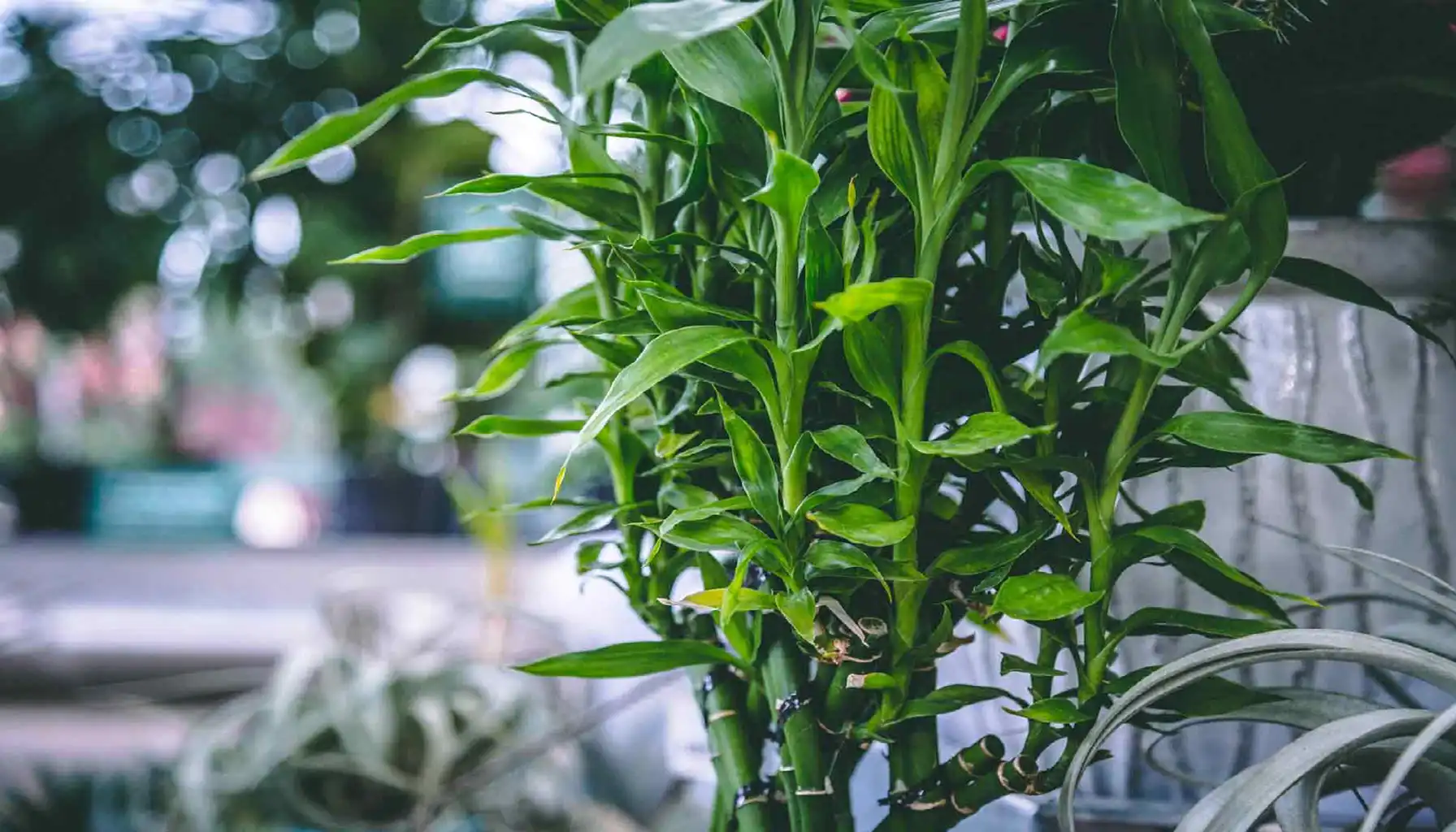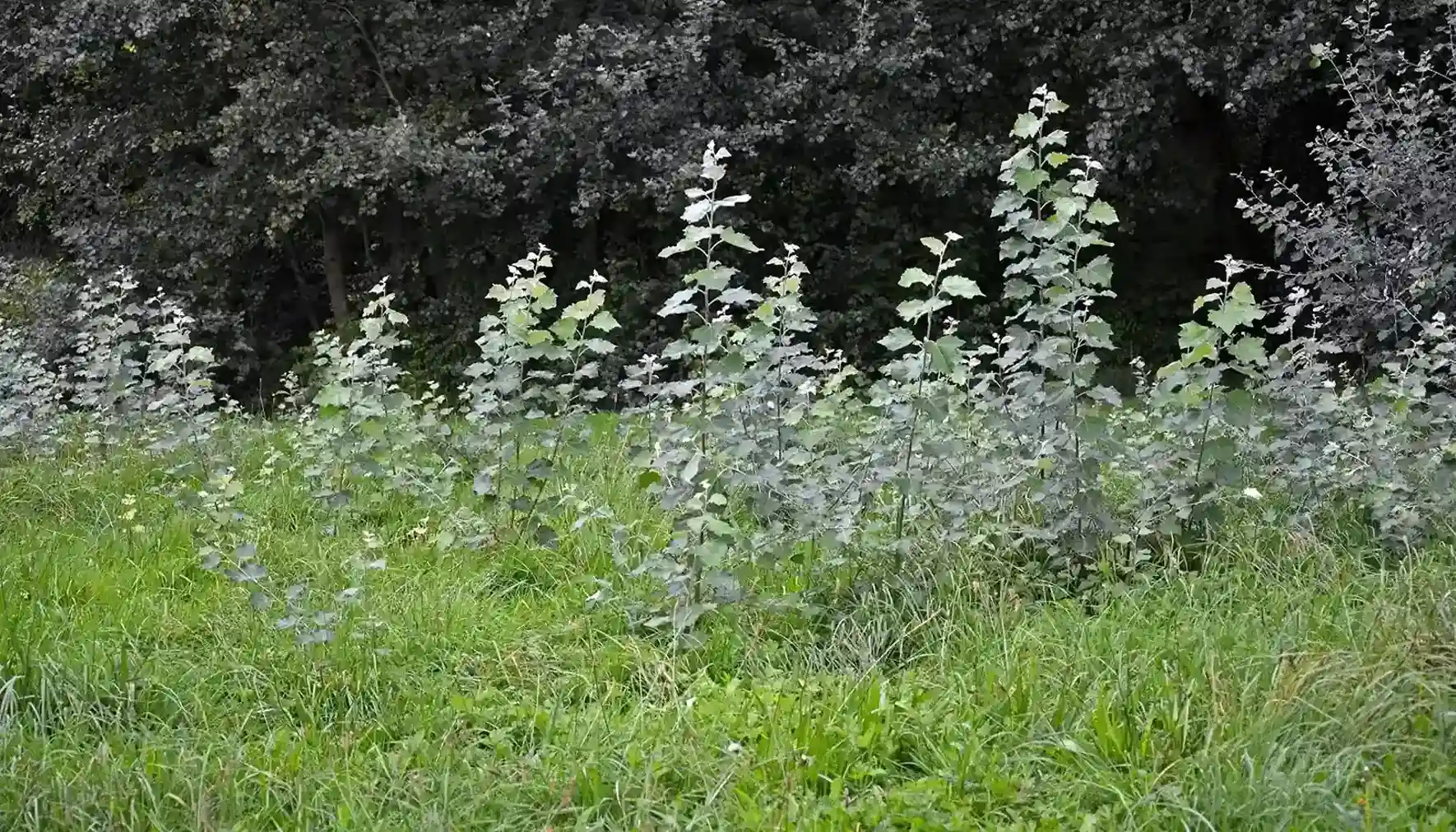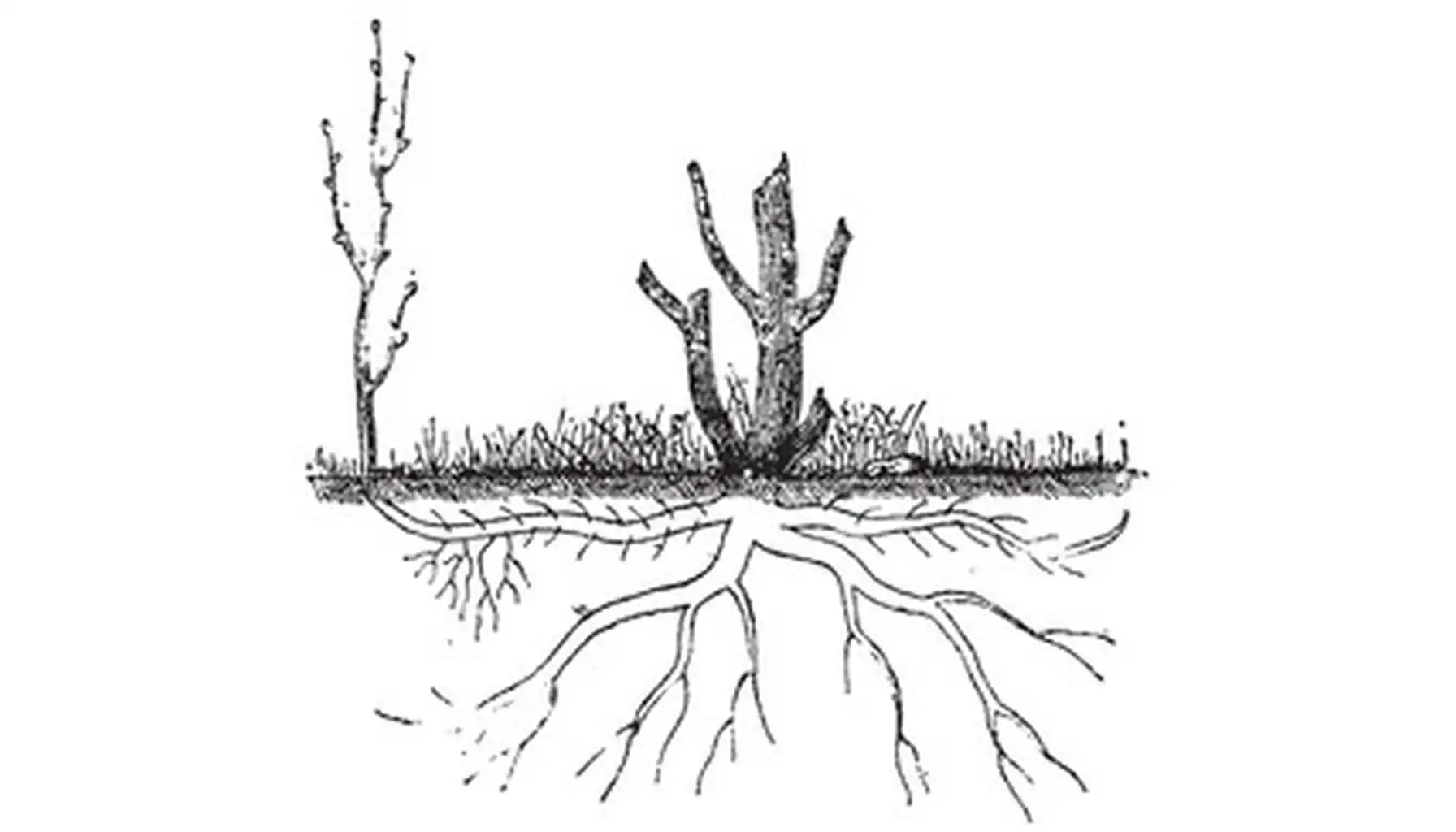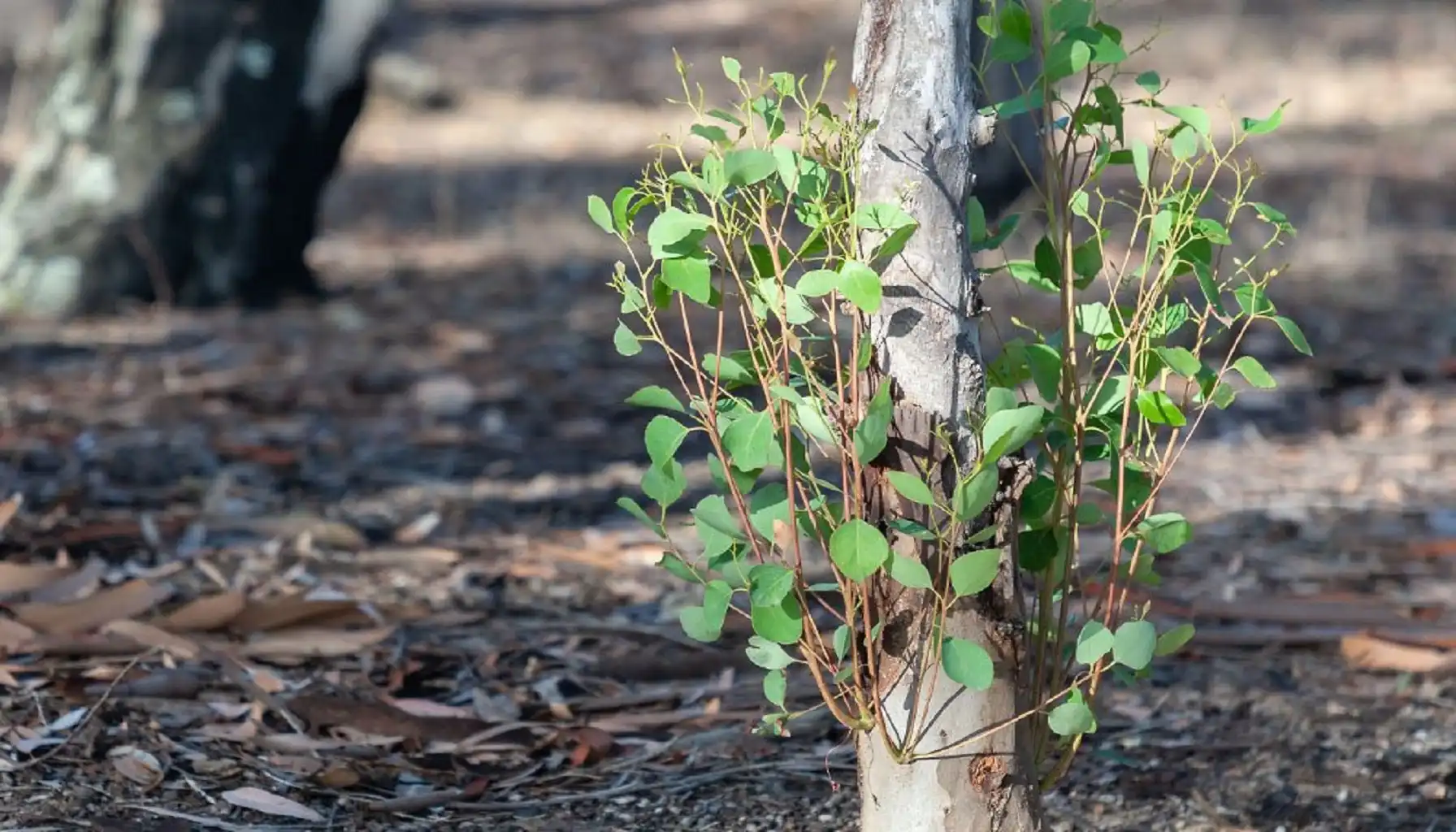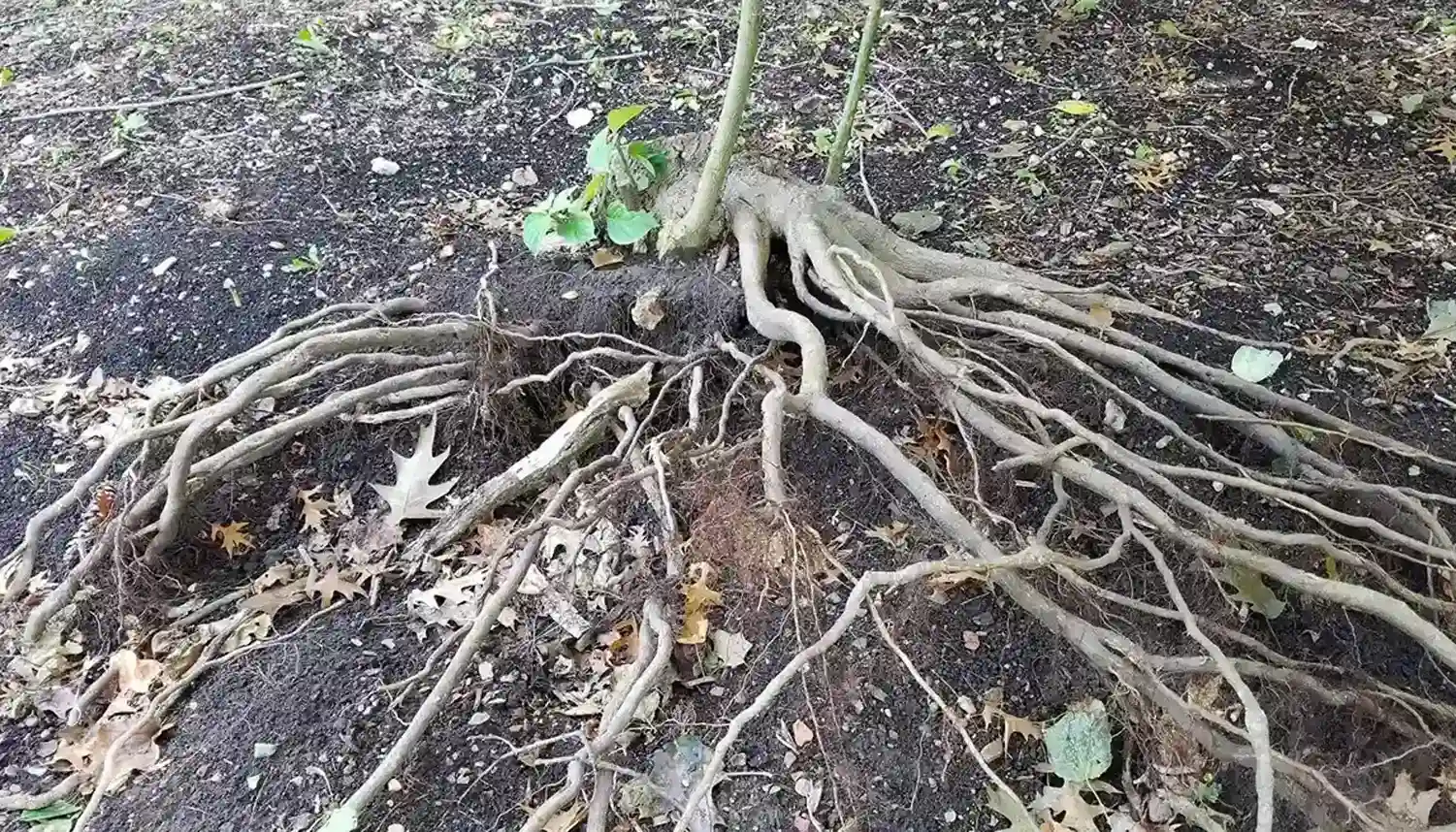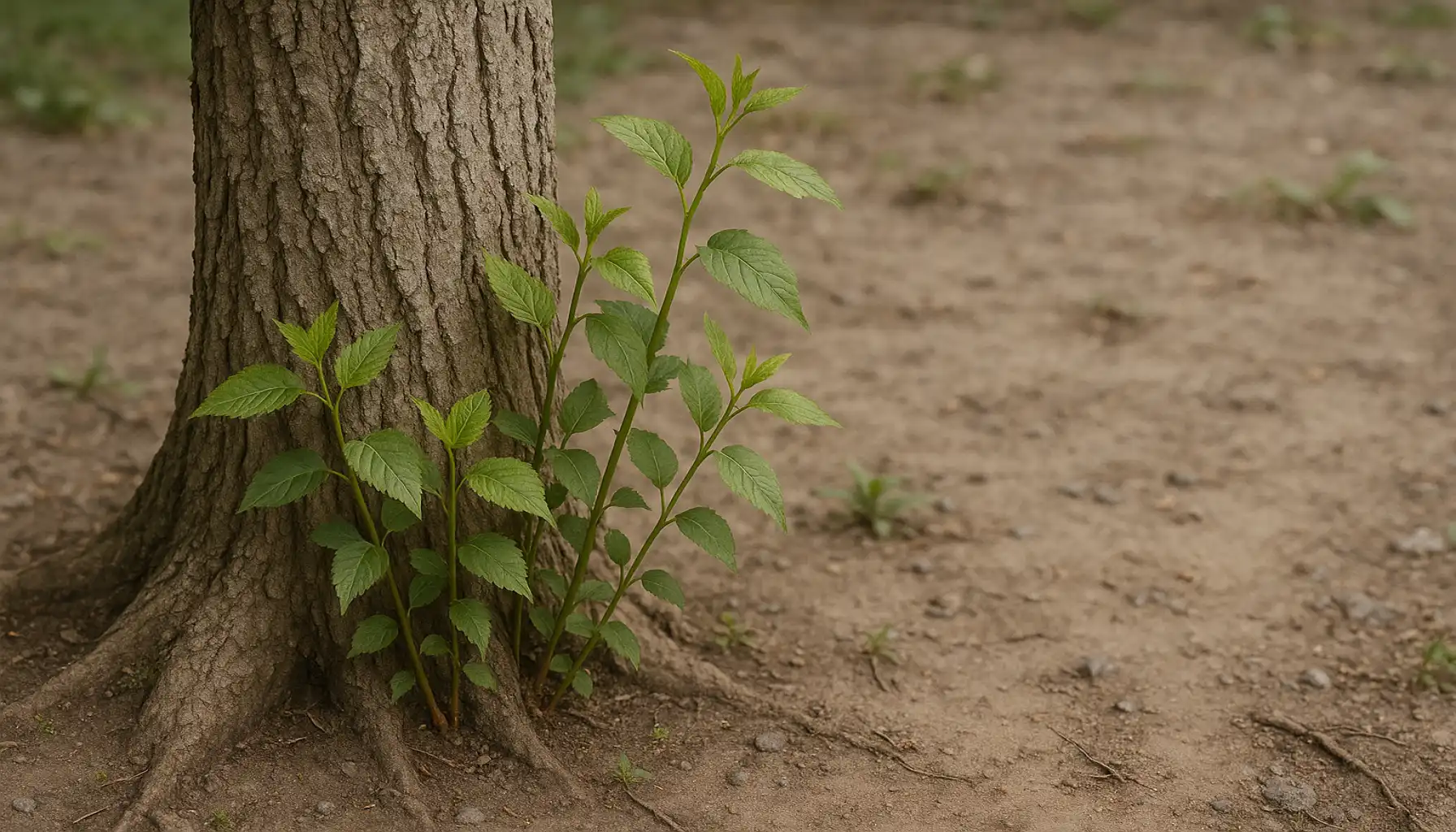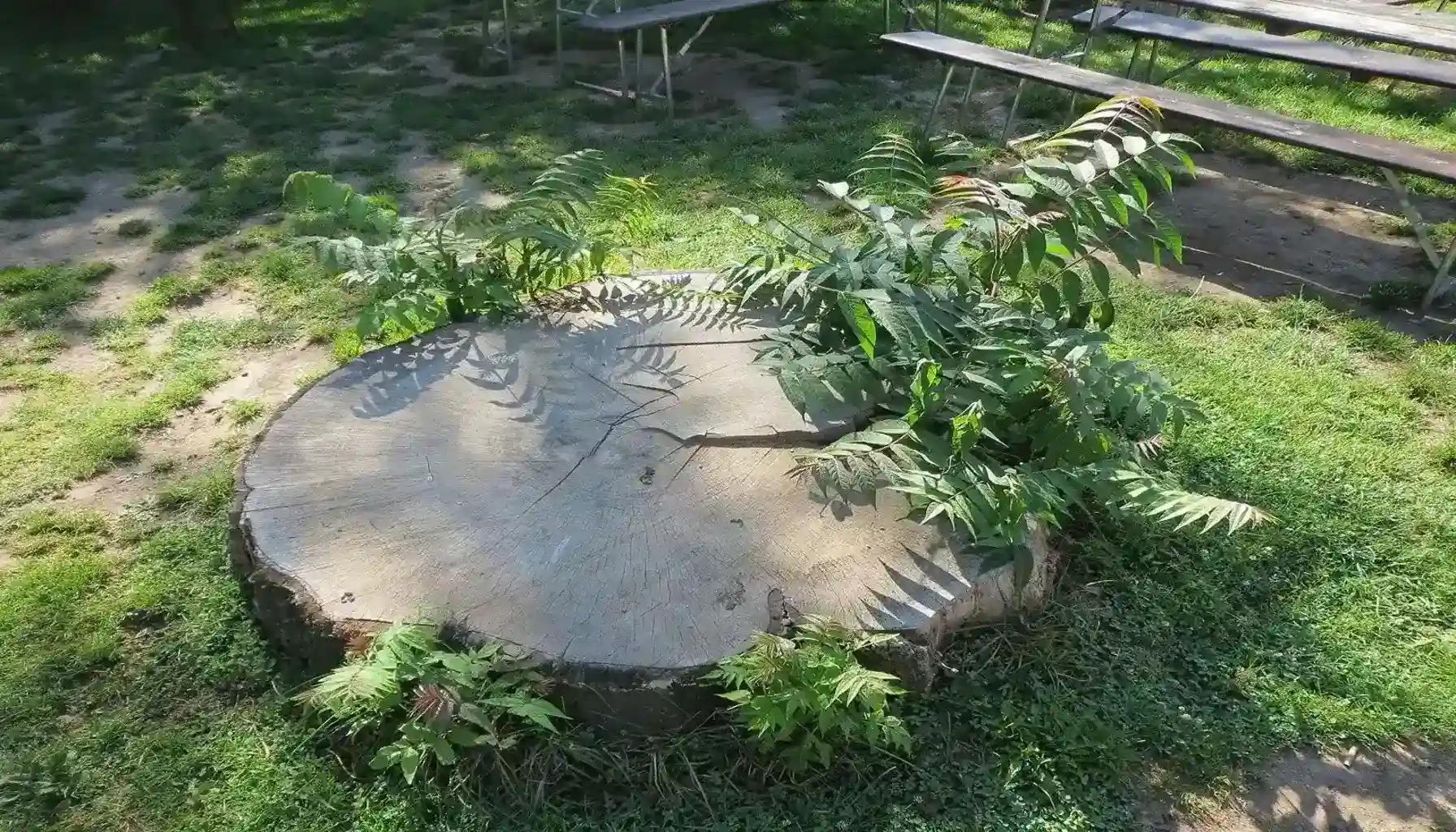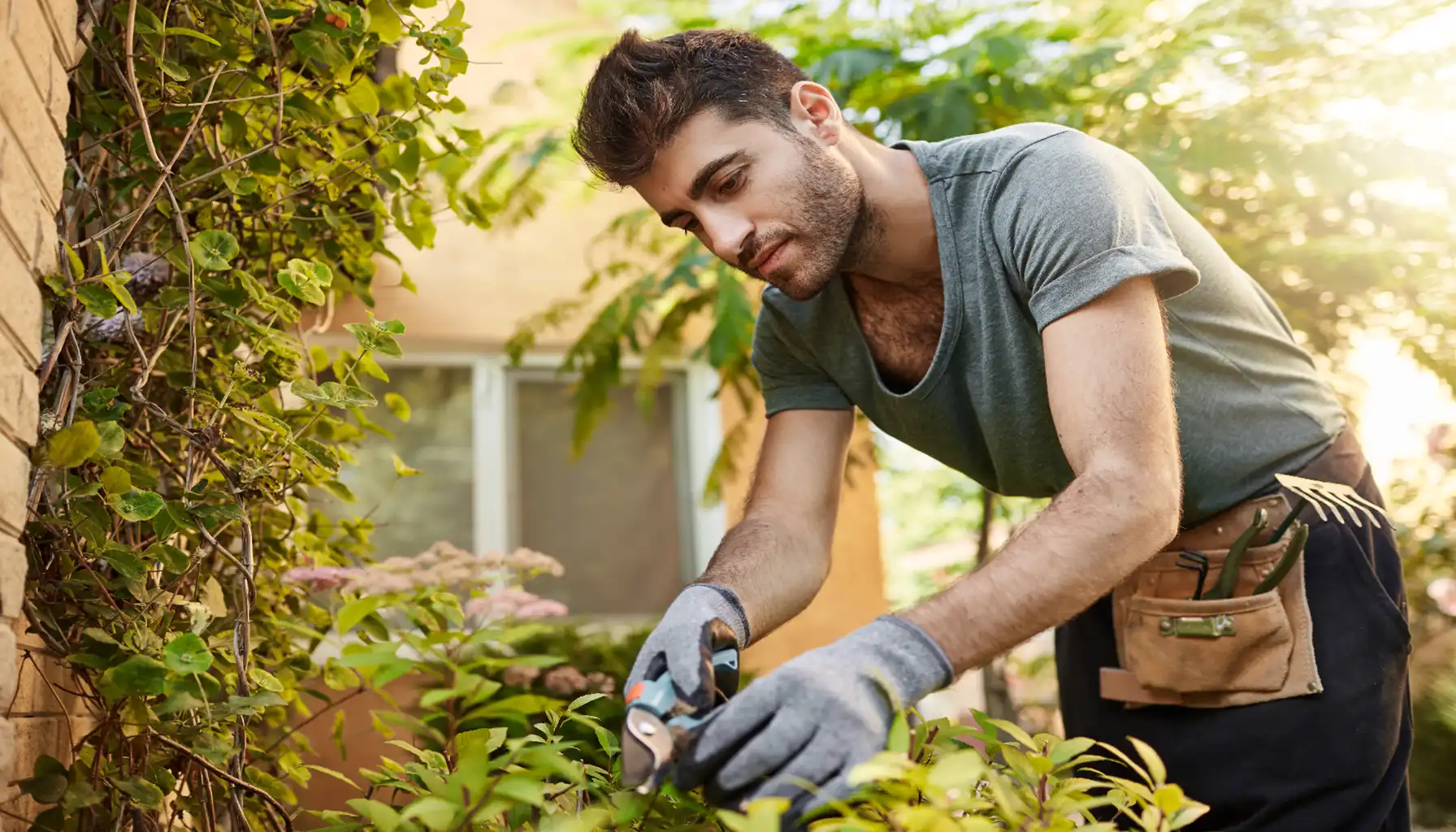.Tree suckers are a common challenge for homeowners and gardeners, often appearing unexpectedly and threatening the health and appearance of your garden. Let’s understand how to remove tree suckers, what is the reason for this plant disease, and why fruit tree suckers harm your garden so strongly — step-by-step, in simple terms.
What Are Tree Suckers?
To understand what are suckers on a tree in easy words, just keep in mind that they are vigorous shoots that emerge from the root system or base, rather than from the main trunk or branches. They often look different from the rest of the plant and can sap water and nutrients, weakening the main plant and creating an unsightly, bushy appearance.
Feature | Description |
Origin | Emerge from roots or the base of the trunk |
Appearance | Often thinner, longer, and more erratic than regular branches |
Growth Rate | Fast-growing, sometimes overtaking the main tree |
Texture | Young apple tree suckers are soft and green, but harden over time |
Pro Tip: For quick and correct identification, use AI Plant Finder to diagnose plant problems and get instant solutions.
What makes a tree with suckers particularly vulnerable is that the energy goes away from the primary structure. The water, nutrients, and carbohydrates meant to support healthy branches and fruiting can be siphoned off by these opportunistic shoots. This not only weakens your tree but can also change its genetic structure if the shoots originate from a different rootstock.
Why Do Suckers on Tree Form?
Usually they are not random things but a response to stress or the result of specific structural characteristics. Below are the most common reasons:
1. Stress Response
A tree under physical or environmental stress may begin to push out such shoots as a survival mechanism. Common triggers include:
Root damage from construction or soil compaction
Drought or inconsistent watering
Over-pruning of the canopy
Pest infestations or fungal diseases
Mechanical injuries like lawnmower wounds near the base
Think of this process as the botanical way of saying: “I need to grow more in case part of me dies.”
2. Graft Failure
Many ornamental and fruit trees are grafted—meaning the visible tree (scion) is attached to a different rootstock that supports its growth. If the scion is weakened or damaged, the more vigorous rootstock may start pushing up the suckers tree to replace it. These tree root suckers can eventually outcompete the scion, changing the variety and ruining your careful cultivation.
Example:
A grafted Fuji apple may begin producing non-Fuji crabapple tree suckers from its rootstock, leading to poor fruit quality and an unbalanced appearance.
3. Natural Growth Habit
Some species are more prone to suckering by nature. If you have one of the followings, you may need to be extra vigilant:
Species | Suckering Tendency |
Cherry (Prunus spp.) | High risk |
Locust (Robinia spp.) | Very high |
Poplar (Populus spp.) | Extreme |
Maple (Acer spp.) | Moderate to high |
Plum (Prunus domestica) | High |
For these ones, even healthy conditions can still result in cherry tree suckers growth—making routine maintenance essential.
Why Should You Remove Tree Suckers?
How to kill tree suckers isn’t just a cosmetic concern—it’s critical for the health and productivity of your garden. Here’s why you must know how to stop tree suckers:
1. They Drain Vital Resources
Maple tree suckers act like freeloaders, pulling water and nutrients away from the main body. This can reduce:
2. They Alter the Genetic Identity
In grafted trees, plum tree suckers are genetically different from the upper body. Allowing them to grow unchecked means you may lose the characteristics of the scion—whether it’s fruit flavor, bloom color, or shape.
3. They Compromise Aesthetics
Clusters of low-growing shoots ruin the visual balance, creating a messy, unkempt appearance. In manicured gardens, this can throw off the entire landscape design.
Extra Tip: Look at the ornamental plants that might fit your garden and create a unique aesthetic look.
How to Get Rid of Tree Suckers
1. Act Early
The younger the shoot, the easier it is to remove and the less energy it has siphoned from the tree. Try to catch them when they’re still:
Soft
Green
Easily breakable by hand
Young oak tree suckers can often be rubbed off with a gloved hand or gently twisted away at the base. Early intervention reduces long-term stress and keeps your maintenance routine manageable.
2. Use the Right Tools
For more mature or woody pear tree suckers, you’ll need to step up your equipment. Here's a breakdown of what to use depending on shoot thickness:
Sucker Size | Recommended Tool | Notes |
Thin & green (≤ ¼ inch) | Gloved hand or pruning snips | Ideal for quick removal |
Moderate (¼–¾ inch) | Bypass pruners | Ensure they are clean and sharp |
Thick or woody (≥ ¾ inch) | Loppers or pruning saw | Cut close to the base without damaging bark |
.
Always sterilize your tools before and after use to avoid spreading disease between trees.
3. Cut Close—But Not Too Close
Make your cut flush with the trunk or root where the shoot originates. Leaving a stub invites two problems:
However, avoid cutting into the bark or trunk tissue. Any injury to healthy bark can trigger a new round of stress responses, resulting in more elm tree suckers.
4. Dealing with Root-Based Suckers
When lemon tree suckers emerge from exposed surface roots, they can be harder to manage. Follow these steps:
Gently pull away the soil around
Locate the base where it attaches to the root
Use a rubbing or twisting motion to remove it by hand, or slice it carefully with a sharp knife
This approach removes dormant bud tissue, reducing the likelihood of regrowth from the same spot.
More Care Tips: Another key problem of almost any garden is pests — find out how to control them without harming the environment.
How to Prevent Tree Suckers
1. Keep Plants Healthy from the Start
Pruning tree suckers are often a symptom of stress, so prioritizing your tree’s overall health is the most natural form of prevention. Here’s how:
Consistent watering: Water deeply during dry spells, especially after pruning or during transplant recovery.
Avoid over-pruning: Removing too much canopy at once can be shocking and trigger shoot growth as a survival response.
Prompt pest and disease control: Aphids, borers, fungal infections, and other threats can weaken your tree and cause it to respond with dollar tree suckers production.
Watch for lawn equipment damage: Nicks and cuts from mowers or trimmers near the base can signal to send out new growth as a healing response.
2. Smart Mulching and Soil Care
Mulching serves several purposes: conserving moisture, regulating soil temperature, and reducing physical stress to roots. But it must be done correctly:
Do | Don’t |
Use natural mulch like bark or wood chips | Pile mulch against the trunk (can cause rot and invite pests) |
Apply 2–4 inches in a wide ring around the base | Cover root flares—leave them exposed |
Keep mulch refreshed annually | Use plastic or impermeable covers that trap moisture |
In areas where tree roots are visible, you can lightly raise the soil level to reduce exposure and discourage crape myrtle tree suckers. However, avoid heavy fill-ins that suffocate the roots.
Chemical and Mechanical Sucker Control
In more stubborn cases, such as bay tree suckers from cut stumps or volunteer trees, physical removal may not be enough. For targeted treatment of persistent problems (especially those returning repeatedly), systemic herbicides like triclopyr or glyphosate may be effective. These work by being absorbed into the vascular system and killing the sucker at the root.
⚠️ Important:
Only apply herbicides to freshly cut sucker stubs
Avoid overspray or runoff—chemicals can damage or kill the main tree if misapplied
Always follow product instructions and local regulations
Mechanical Suppression
For large infestations or old cut stumps, you may need to:
These methods are more labor-intensive and should be used when removal and herbicides fail.
Should You Call a Pro Arborist?
Some situations demand more than DIY solutions. Here are scenarios where it’s safer and smarter to consult a certified care specialist:
➤ High or Inaccessible Cases
If suckers are sprouting higher up on the trunk or branches, removing them may require ladders, ropes, or even climbing gear. This creates fall risk and potential injury—best left to trained pros.
➤ Grafted Tree with Graft Failure
If your tree appears to be reverting to rootstock, or the banana tree suckers seem more vigorous than the main scion, a pro can assess whether the plant is salvageable—or if it’s time to consider replacement.
➤ Chronic or Severe Suckering
Some species develop tree of heaven suckers persistently, despite careful pruning. This often signals underlying health issues or species-specific behavior. A certified arborist can recommend:
➤ Thick Root Suckers on Large Trees
If the root sprouts are emerging far from the base and growing aggressively, cutting them incorrectly may damage major roots. In this case, professional diagnosis and removal prevent lasting harm.
Useful tip: Before calling a pro, try to make a quick check-up by yourself. Here is an instruction on diagnosing your plant’s problem.
Frequently Asked Questions
Are suckers and seedlings the same thing?
No. They grow from the roots or base of an existing plant. Seedlings sprout from seeds and usually form at a distance. Seedlings are easier to dig out and don’t reappear from the same location if fully removed.
Can I propagate new trees from suckers?
Only from non-grafted ones. Suckers from grafted rootstocks may grow into something completely different than the scion, often with poor fruit or ornamental qualities. If the tree is on its own root, you may transplant sprouts successfully.
Will removing suckers harm my tree?
Not if done correctly. Gentle, timely removal helps rather than harms. Just avoid cutting too close to the trunk or damaging bark.
They are nature’s way of fighting back against stress—but they can be a major nuisance in gardens and landscapes. Left unchecked, they weaken trees, alter their genetics, and ruin visual balance. But with knowledge and timely action, you can:
And when in doubt, don’t hesitate to consult a certified arborist—especially if your tree is grafted, repeatedly suckering, or showing signs of decline.
Final Tips:
Perform monthly visual checks around bases for new shoots growth.
Use a mulch ring, not a mulch volcano.
After removal, clean tools with isopropyl alcohol to prevent disease spread.
Keep a care log—it helps you track patterns and make better decisions.
Use the plant identifier app for quick acknowledgement with botanical diseases.
AI Plant Finder Related Posts:
